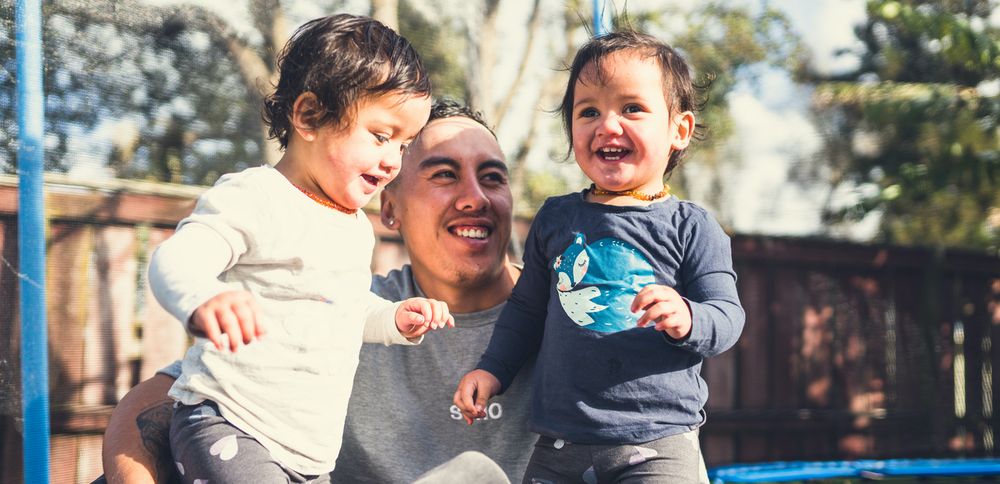How to celebrate indigenous languages in your centre
Published on Tuesday, 26 March 2019
Last updated on Monday, 16 November 2020

Languages are an important part of who we are as people and our cultural identity. They help us communicate, educate, integrate socially and develop, in addition to linking us to our individual identity, traditional culture and memory. Yet sadly many languages are fast disappearing globally.
In an effort to honour and raise awareness for all the different languages around the world and help those who speak them, the United Nations has declared 2019 the Year of Indigenous Languages (IYIL 2019). Here's how you can support and celebrate indigenous languages in your early childhood service.
What is an indigenous language?
Contrary to popular belief, an indigenous language is not always the language that is most widely spoken in a country. Instead it's an autochthonous language, one that's native to a region and spoken by indigenous (native) people from a distinct community that originated in the area.
According to the International Year of Indigenous Languages 2019 website, there are:
- 7 thousand - Languages spoken worldwide
- 370 million - Indigenous people living in the world
- 90 countries - With indigenous communities
- 5 thousand - Different indigenous cultures
- 2,680 languages - Currently in danger
Indigenous languages are important because they foster the development of:
- Knowledge - Unique systems of knowledge and understanding of the world.
- Peace - Sustainable development, investment, peace building and reconciliation.
- Rights - Fundamental human rights and freedoms for indigenous peoples.
- Inclusion - Social inclusiveness, literacy, poverty reduction and international cooperation.
- Diversity - Cultural values, diversity and heritage.
Indigenous language in New Zealand
Looking in our own backyard first, Māori is our indigenous language and Te Reo (‘the language’), is an Eastern Polynesian language that’s closely related to Cook Islands Māori, Tuamotuan and Tahitian; and although the number of Te Reo speakers dropped significantly after 1945, thanks to a national language revitalisation effort Māori is now flourishing.
Most non-Maori New Zealanders use Māori words as part of their everyday conversation and we already celebrate our indigenous language annually with Māori Language Week in September (centred around Māori Language Day on 14 September).
Ideas for celebrating the native tongue
Many New Zealand early childhood services already incorporate our indigenous language into daily activities and settings, regardless of whether there are any Māori staff or attending children. However, if you're looking for more ideas then here are a few:
- Use common Māori words frequently - Regularly replace or interchange common English words with Māori ones. Such as: hello (kia ora), good (kapai), house (whare), family (whanau), sleep (moe) and song (waiata).
- Learn new Māori words - Each week try learning one new word with the children, get them to draw what it means and try writing out the letters.
- Put up posters - Have signs and posters written in Māori around all of the classrooms, such as one listing all the names of body parts, so that the words become very familiar.
- Have a guest speaker - An external expert or internal carer (or even parent) could be invited in to discuss Māori language and culture.
- Enjoy the arts and culture - A further extension of embracing Māori language could be to also play or learn indigenous songs. Reading children’s books with Māori words is also a fun activity.
Including other indigenous languages
Now thinking about the rest of the world, here are some ways you can teach acceptance and awareness of other international indigenous languages in your centre:
- Highlight the five pillars of indigenous languages (as per IYIL 2019) - Knowledge, Peace, Rights, Inclusion and Diversity. You could write each word on a piece of cardboard, talk about what they mean and then have the children cut and paste images from old magazines and/or draw pictures on them that represent what the words stand for.
- Identify links to other cultures - You might have some children or carers in your service that are from other countries in which case you could invite their parent in or have the teacher talk about what languages are indigenous to their country.
- Read multilingual books - At story-time select books which feature words in multiple languages and discuss which country they are indigenous to.
- Decorate the classroom - Write out some simple or common words (such as hello or goodbye) in different indigenous languages and have them placed around the centre with a picture of what the word means. Another idea could be to hang up flags of different countries to aid discussions about what languages are indigenous for each.
Thanks to IYIL 2019 and Kiwi Families for their information on international indigenous languages and Te Reo.
Related Articles

Overview on teacher-led vs parent or Whānau-led child care
In teacher-led services, paid staff have the main responsibility for children’s care and education.

Are you a great teacher?
What is it about teachers, that can improve student learning?

Bilingual teachers in demand
Recent changes in government policy may result in increased demand for bilingual teachers - particularly those who can speak Te Reo Maori or Pasifika languages.
